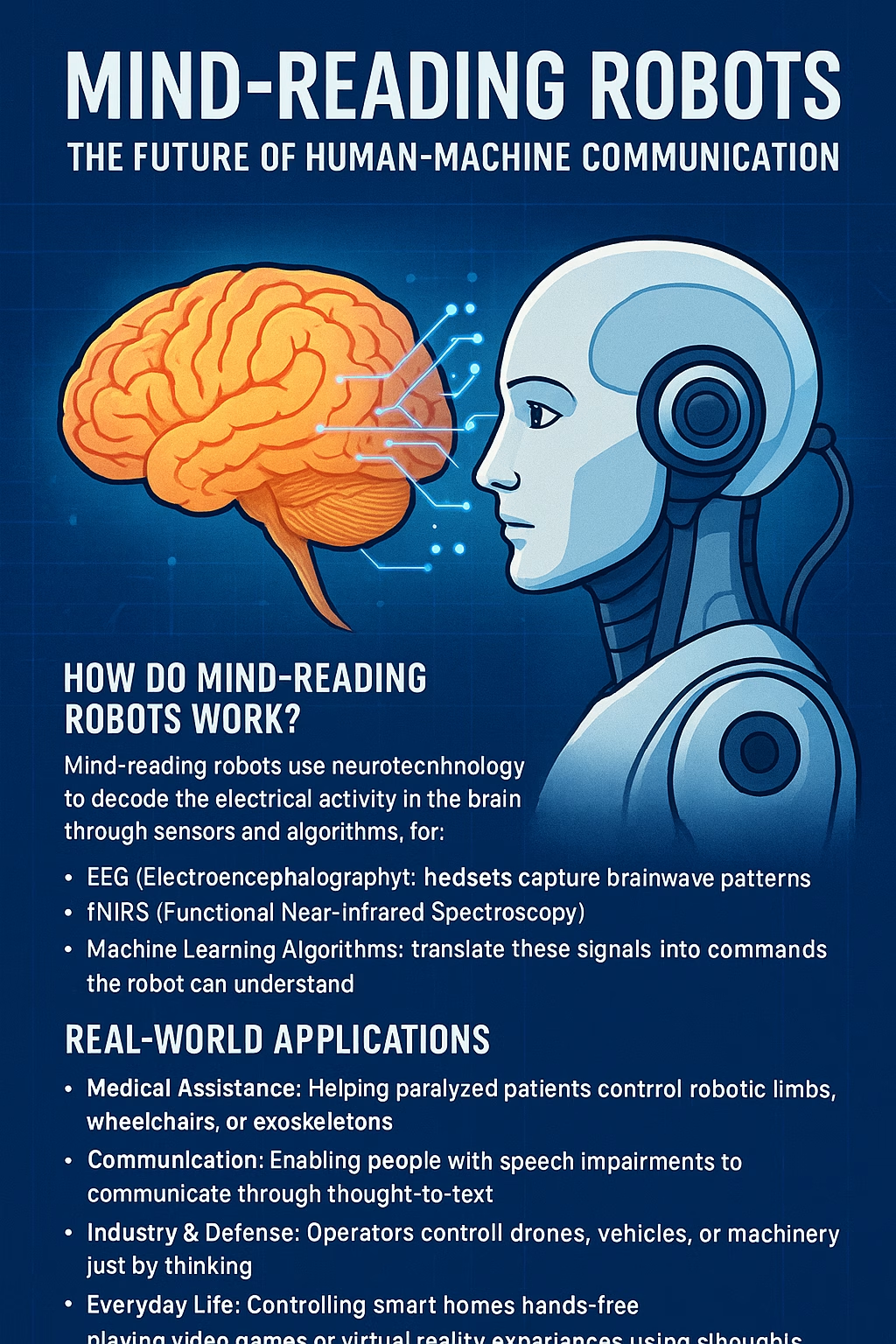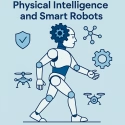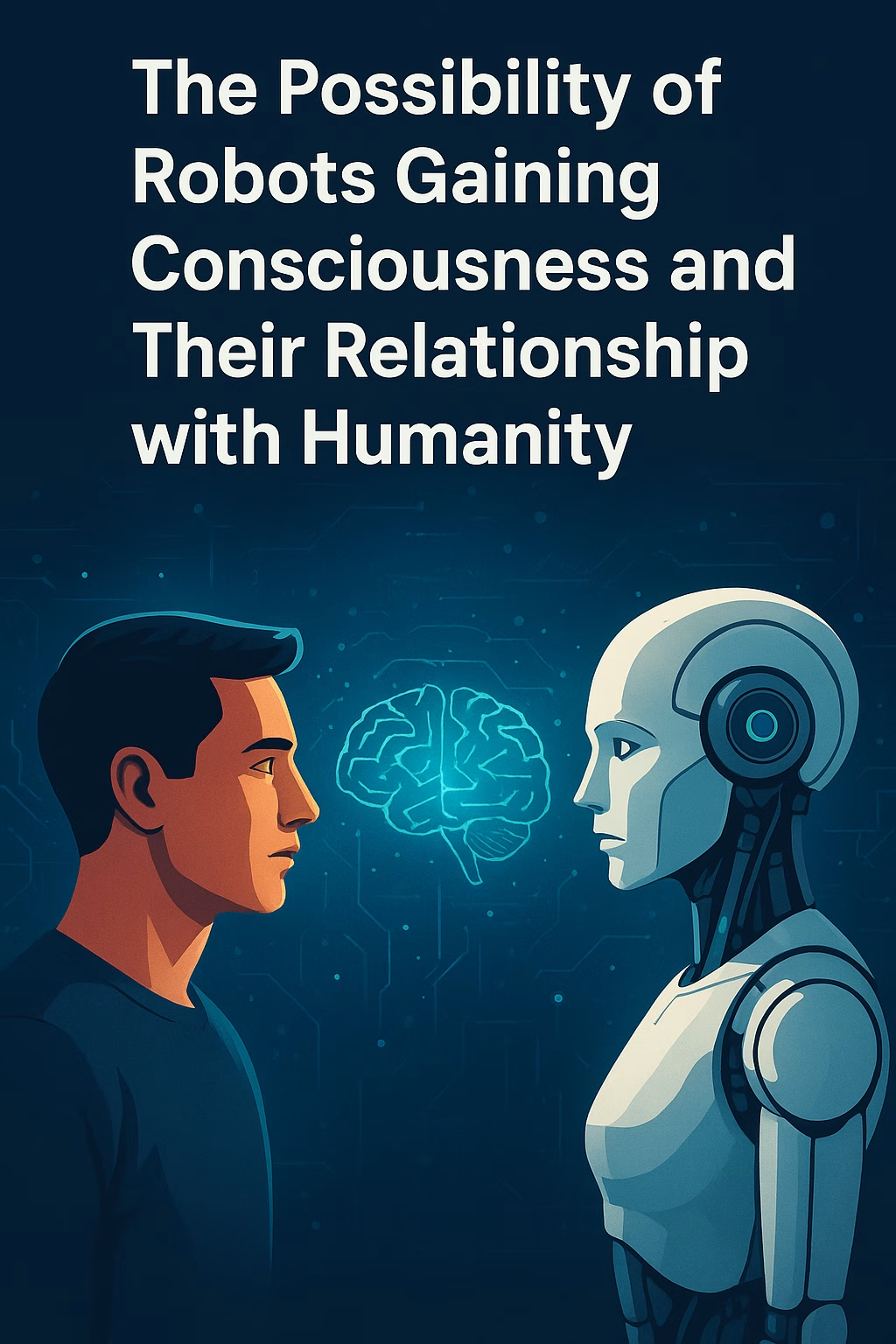Mind-Reading Robots: The Future of Human-Machine Communication
Introduction
Imagine a robot that doesn’t need you to press buttons, speak commands, or even make gestures. Instead, it understands your thoughts directly through brain signals. This futuristic concept is rapidly becoming a reality thanks to advances in brain-computer interfaces (BCIs), neuroscience, and artificial intelligence. These so-called mind-reading robots could revolutionize how humans and machines interact.
How Do Mind-Reading Robots Work?
At the core of mind-reading robots lies neurotechnology. They use sensors and algorithms to decode the brain’s electrical activity:
- EEG (Electroencephalography): Special headsets capture brainwave patterns.
- fNIRS (Functional Near-Infrared Spectroscopy): Measures blood flow in the brain to track cognitive activity.
- Machine Learning Algorithms: AI translates these signals into commands the robot can understand.
For example, when a person thinks about moving their arm, the brain generates specific signals. A robot equipped with a BCI can interpret these signals and move a robotic arm accordingly.
Real-World Applications
- Medical Assistance
- Helping paralyzed patients control robotic limbs, wheelchairs, or exoskeletons.
- Allowing stroke survivors to regain independence through brain-controlled rehabilitation robots.
- Communication
- Enabling people with speech impairments to communicate directly through thought-to-text systems.
- Robots acting as interpreters between brain signals and digital language.
- Industry & Defense
- Operators controlling drones, vehicles, or machinery just by thinking.
- Soldiers using mind-robot interfaces for faster and silent communication in the field.
- Everyday Life
- Controlling smart homes hands-free.
- Playing video games or virtual reality experiences using only thoughts.
Benefits of Mind-Reading Robots
- Faster Interaction: No need for physical input devices.
- Accessibility: Life-changing for people with disabilities.
- Enhanced Safety: Workers can control dangerous machines without direct exposure.
- New Human-Robot Bond: Robots can sense stress, fatigue, or emotional states through brain signals.
Ethical and Social Challenges
However, mind-reading robots raise critical questions:
- Privacy: Who owns your brain data?
- Security: Could hackers manipulate or steal neural signals?
- Dependence: Will humans rely too much on mental shortcuts?
- Identity: If a robot acts based on your thoughts, is it truly you or the machine making the decision?
The Future of Mind-Reading Robots
Experts predict that within the next 10–20 years, non-invasive BCIs will become mainstream. Robots will not only follow human commands but also anticipate needs by analyzing brain states. A hospital robot might bring medicine before a patient asks, or a household robot could detect stress and suggest relaxation.
Mind-reading robots might blur the line between human intention and machine execution, leading to a new era of seamless interaction where technology feels like an extension of the mind itself.
✨ What do you think? Would you trust a robot to read your thoughts?
💬 Share your opinion in the comments and don’t forget to sign in to our website for more futuristic insights!









